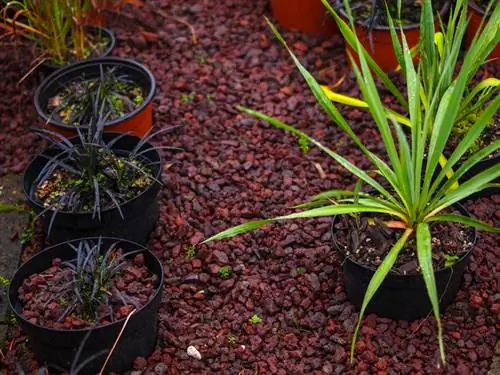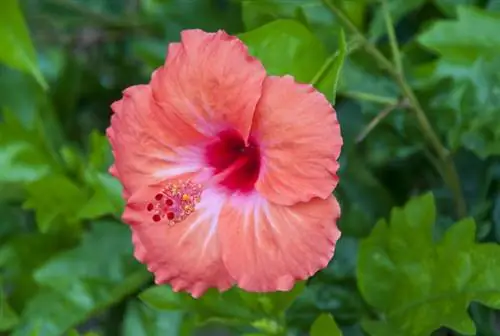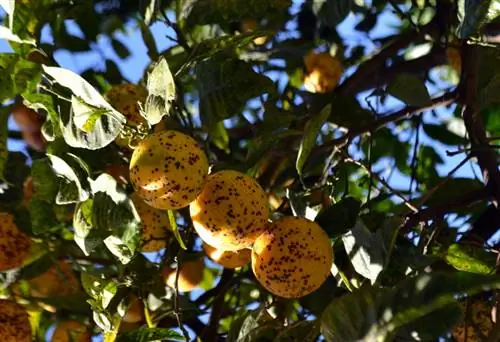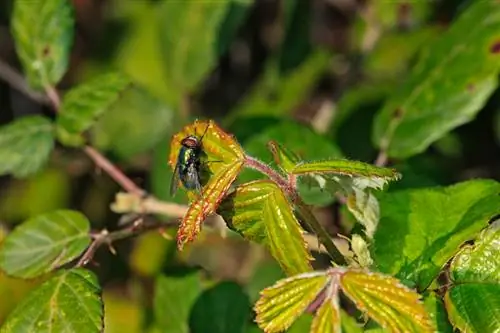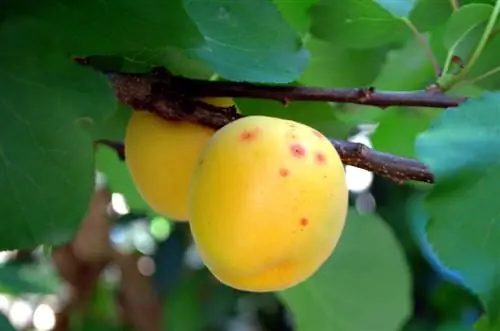- Author admin [email protected].
- Public 2023-12-16 16:46.
- Last modified 2025-01-23 11:20.
Basically, the yucca is considered a fairly easy-care and robust plant that is rarely affected by pests and pathogens. Of course, even the most robust plant can become ill - which usually happens as a result of improper care or an unsuitable location. Such mistakes weaken the plant and make it more vulnerable to uninvited guests.
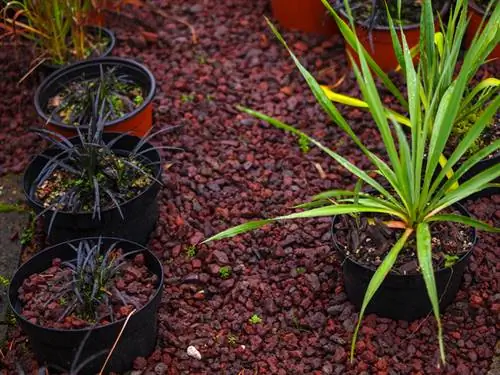
What diseases can affect yucca palms and how to treat them?
Yucca palms can become ill due to care errors, fungal infections or root rot, among other things. The causes are usually too much or too little water, the wrong location or pests. Affected parts should be removed and the plant may be treated with a fungicide or repotted in new substrate.
Diagnosis and finding causes
For this reason, you should not only fight the actual illness, but also look for the cause. If the cause is not eliminated, the disease can break out again and again and ultimately cause the death of the plant. For example, you should never water the yucca just because its leaves look brown and dried out. Quite the opposite, as these symptoms can also be caused by excess moisture. In this case, more water would be fatal.
Illness symptoms caused by care errors
Yucca palms often develop brown or yellow leaves, which can have various disease-related causes. Behind this are often
- too much or too little water
- Over-fertilization or under-fertilization
- too little light
- too small a pot
- or an infection with fungi or bacteria
- Pest infestation also causes leaf discoloration
In the vast majority of cases the cause can be found in wetness and/or lack of light. If you correct these problems as quickly as possible, the plant will recover quickly. However, discolored leaves do not change color again, which is why they can be removed.
Diseases
Fungicidal or bacterial infections or pest infestations often affect plants that have been weakened by incorrect care. That's why you should always treat the yucca appropriately - which is sometimes not that easy, because there are around 50 different species, some with very different needs. There are hardy yuccas that can be safely planted in the garden and pure indoor yuccas that feel most comfortable in warm and protected locations. But all yuccas have one thing in common: they are not tropical plants with a high need for warmth and moisture! Quite the opposite, because most members of the large Yucca family are native to the deserts and semi-deserts of the southern USA - and it is rather dry there and often quite cold during the winter months.
Fungal infections
Fungal infections such as powdery mildew also affect the yucca. Often not only the leaves are infected, but also or especially the trunk. This then becomes soft, hollow on the inside and can break off. As with any other affected plant, you should remove and dispose of the affected parts of the yucca and then treat the plant with a fungicide. You don't have to resort to chemicals right away, because there are a whole range of very good biological preparations.
Root rot
The root cause of every root rot is waterlogging, as a result of which putrefactive bacteria eventually settle and cause the roots to rot. Rescue is usually only possible if the yucca is cut back both above and below ground and potted in a new pot with fresh substrate.
Tip
Pests such as spider mites, aphids, etc. also appear more frequently on the yucca during the winter months. Check your plants regularly for signs of infestation so that you can intervene in time.

